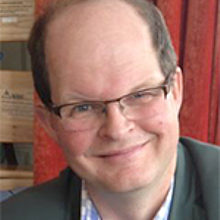 by Simon Chapman, Deputy Director, Personalised Care Group, NHS England.
by Simon Chapman, Deputy Director, Personalised Care Group, NHS England.
Twelve years ago I was working for a charity just north of Kings Cross. My office looked out on a derelict area of forgotten buildings and toxic land. Over the next 10 years, things gradually changed as the infrastructure was renewed: old buildings were renovated and new spaces and buildings were created for people and communities to visit, use and inhabit. Now, where there was wasteland, parents watch their children play in the Granary Square fountains. It’s a terrific example of well-designed development infrastructure providing a framework that enables life, community and wellbeing to flourish.
And NHS England is taking a similar approach to expanding social prescribing, as part of an expanded team of people working in general practices. We are definitely not approaching it from a standing start, and we are not taking the credit for what is a vibrant social movement that many have worked in for decades. Across the country people have been working in communities to support activities that are good for people’s wellbeing. But, like the landscape I saw from my old office, social prescribing in primary care needs some design principles and infrastructure to be resilient, robust and widespread.
Our commitment in the Long-Term Plan is to have at least 1000 trained social prescribing link workers in primary care networks (PCNs) by 2020/21, and more beyond that, so that at least 900,000 people can be referred to social prescribing by 2023/24. This is the largest investment in social prescribing made anywhere by a national health system. And it’s not happening in isolation: social prescribing is one of six components of the NHS’s comprehensive model of personalised care.
We intend to secure a sustainable future for social prescribing in primary care so that it’s available for all who need different forms of support. Community approaches and social prescribing are at the heart of the NHS’s vision for its next 70 years. No longer nice to do; central to the future. That’s why we have built funding for the new link workers into the new GP contract so that it has contractual protection.
Social prescribing may not be new, but our ambition to make it universally available is. Achieving this means we must keep to some clear principles. Building on existing know-how for what makes effective social prescribing, we have worked with current social prescribers, as well as the voluntary sector and people with lived experience, to co-produce a standard model for social prescribing. It’s captured in a summary guide.
Perhaps the most radical thing about link workers is that they are employed to give people time. They will have the time and the space to work alongside people often with complex needs and life circumstances. They can help people who may become isolated, whose innate gifts have become buried deep, providing time and relationships that are critical to building confidence and reconnecting. Or they might support people for whom movement is difficult and life is challenging, by helping them to connect with walking, dancing, gardening – or other forms of community activity that helps to keep them moving and connected.
Link workers in primary care will become part of the networks of support that exist in communities. Although the GP’s surgery is often a place people come to when they don’t know where else to go, health services are only part of the picture. It’s been estimated that at least 20% of people consult GPs for what is primarily a social rather than a health issue. Link workers will be able to connect people with debt, benefits and financial advice, housing support, as well as community-based activities and support. There are many possibilities, depending on the person’s priorities and what’s available locally, including: walking and other outdoor activities; arts, singing and cultural groups; sport and exercise; lunch clubs.
Successful social prescribing in primary care will work alongside what’s already happening in communities and the local system, enabling people to build on strengths that are already present.
